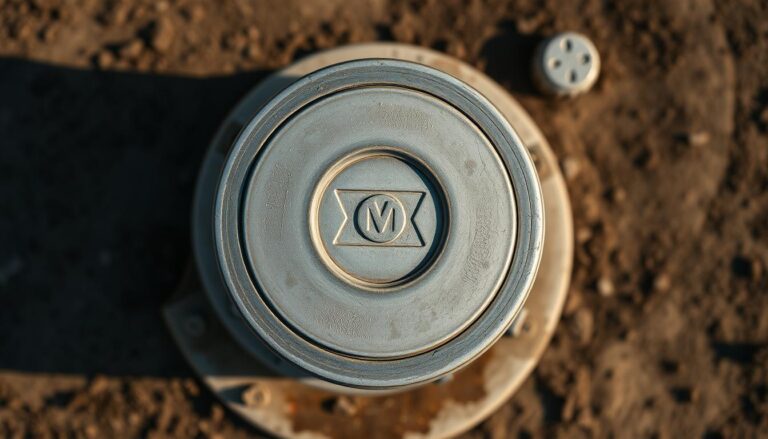Does Well Water Work During Power Outages?
For many homeowners, especially those in rural areas, well water is a reliable source of clean drinking water. However, a critical question arises during emergencies: can it still function when the power is out?
Most residential well pumps are electric, requiring a consistent power supply to operate. During a power outage, the water well system can become depressurized, potentially allowing contaminants to enter the system. Understanding how to maintain access to safe and clean water during such times is crucial.
Key Takeaways
- Well water systems rely on electric pumps that require power to function.
- Power outages can lead to depressurization and potential contamination.
- Understanding well water functionality is crucial during emergencies.
- Homeowners can take steps to prepare for power outages.
- Alternative solutions can ensure continued access to clean water.
Understanding Well Water Systems
Understanding the intricacies of well water systems is essential for homeowners who rely on them. A well water system’s primary function is to extract water from a well and distribute it throughout the household. This process involves several key components working together seamlessly.
Components of a Typical Well System
A typical well system consists of a well pump, pipes, and a storage tank. The well pump is responsible for drawing water from the well, while the pipes transport this water to the storage tank, which then supplies the household’s water needs.
How Electric Well Pumps Function
Electric well pumps are the heart of most well water systems, functioning by using electrical energy to draw water from the well and push it through the plumbing system. The efficiency and capacity of the pump are crucial for ensuring a steady water supply.
Dependency on Electricity
Most well water systems rely heavily on electricity to operate, which means they are vulnerable to power outages. Understanding this dependency is crucial for planning well water system backups or alternative methods for operating well water without electricity.
| Component | Function |
|---|---|
| Well Pump | Draws water from the well |
| Pipes | Transport water to the storage tank |
| Storage Tank | Supplies water to the household |
Does Well Water Work in a Power Outage?
When the power goes out, one of the first concerns for homeowners with well water is whether they’ll still have access to this essential resource. The answer to this question depends on several factors related to the well water system.
The Short Answer
In most cases, well water does not work during a power outage because electric well pumps require electricity to function. As “the pump is the heart of the well water system”, its inability to operate means that water cannot be drawn from the well.
According to experts,
“without electricity, the pump cannot push water up to the surface, leaving households without access to their well water.”
This highlights the critical dependency on electricity for well water functionality.
Factors Affecting Well Water Access During Blackouts
Several factors can influence whether a household can access well water during a blackout. One key factor is the presence of a reservoir or storage tank. If a household has a storage tank that was filled before the power outage, they may have a supply of water available for some time.
- The size of the storage tank
- The household’s water usage rate
- The presence of alternative power sources, such as generators or battery backups
These factors can significantly impact the availability of well water during a power outage.
Residual Water Pressure Considerations
Even when the power is out, there may be some residual water pressure in the system due to the water stored in the pipes and pressure tank. However, this residual pressure is typically short-lived and will deplete quickly, especially with use.
Understanding these factors and having a plan in place can help households prepare for power outages and ensure continued access to water.
Types of Well Pumps and Their Power Requirements
Well pumps come in various types, each with its own power requirements and suitability for different situations. Understanding these differences is crucial for homeowners who rely on well water, especially during emergencies or off-grid conditions.
Submersible Pumps
Submersible pumps are a popular choice for well water systems. They are installed underwater and are known for their efficiency and reliability. These pumps are typically electric and require a significant amount of power to operate.
Key characteristics of submersible pumps include:
- High efficiency
- Reliable operation
- Electric power requirement
Jet Pumps
Jet pumps, on the other hand, are installed above ground and use suction to draw water from the well. They can be more versatile than submersible pumps, as some models can be used in shallow wells or with shallow water tables.
Jet pumps have the following advantages:
- Above-ground installation
- Versatility in application
- Can be used in various well configurations
Hand Pumps and Mechanical Options
For those looking for alternatives that don’t rely on electricity, hand pumps and mechanical well pumps are viable options. These pumps can be manually operated, making them ideal for emergency situations or off-grid living.
“In rural areas where power outages are common, hand pumps have proven to be a reliable backup solution for accessing well water.”
Benefits of hand pumps include:
| Feature | Benefit |
|---|---|
| No electricity required | Operates during power outages |
| Manual operation | Ideal for emergency situations |
| Low maintenance | Reduces long-term costs |

In conclusion, the type of well pump and its power requirements play a significant role in determining its functionality during emergencies or off-grid conditions. By understanding the characteristics of submersible pumps, jet pumps, and hand pumps, homeowners can make informed decisions about their well water systems.
Preparing Your Well System for Power Emergencies
Ensuring your well water system’s reliability during a blackout requires some planning and preparation. A well-prepared household can maintain access to clean water even when the power is out.
Assessing Your Household Water Needs
The first step in preparing your well system is to assess your household’s water needs. This includes considering the number of people in your household and your daily water usage. A general rule of thumb is to store at least one gallon of water per person per day for drinking, cooking, and hygiene.
Creating a Well Water Emergency Plan
Having a well water emergency plan in place is crucial. This plan should include details on how to access water during a power outage, such as using a backup generator or manual pump. It’s also important to regularly inspect and maintain your well system to ensure it’s in good working condition.
Water Conservation Strategies During Outages
Implementing water conservation strategies during power outages can help extend your water supply. This can include using water-efficient appliances and fixtures, limiting water usage for non-essential activities, and implementing a graywater system for reusing water from sinks, showers, and washing machines.
| Water Conservation Strategy | Description | Potential Water Savings |
|---|---|---|
| Using Water-Efficient Appliances | Installing appliances that use less water for the same tasks | Up to 20 gallons per day |
| Limiting Non-Essential Water Use | Reducing water used for activities like washing cars or watering lawns | Up to 50 gallons per day |
| Implementing a Graywater System | Reusing water from sinks, showers, and washing machines for irrigation and flushing toilets | Up to 30 gallons per day |
By assessing your household water needs, creating an emergency plan, and implementing water conservation strategies, you can ensure your well water system’s reliability during power emergencies.
Generator Options for Well Pumps
Generator options for well pumps provide a vital solution during power outages, ensuring that your household or farm continues to have access to water. When selecting a generator, it’s crucial to consider several factors, including the size of the generator, the type of generator, and safety considerations.
Sizing a Generator for Your Well Pump
To size a generator correctly for your well pump, you need to understand the power requirements of your pump. This involves checking the pump’s horsepower rating and voltage requirements. A properly sized generator will ensure that your well pump operates efficiently without overloading the system.
For instance, a typical submersible well pump might require a generator with a capacity of at least 5 kW to start and run smoothly. It’s always a good idea to consult the manufacturer’s specifications or a professional to determine the exact needs of your well pump.
Portable vs. Standby Generators
There are two primary types of generators suitable for well pumps: portable generators and standby generators. Portable generators are versatile and can be moved from one location to another, making them a convenient option for temporary or emergency use. However, they require manual setup and connection to your well pump system.
Standby generators, on the other hand, are installed permanently and automatically kick in during a power outage. They offer a more seamless solution but are typically more expensive to purchase and install.
Installation and Safety Considerations
Proper installation of a generator for your well pump is critical for safe and effective operation. This includes ensuring that the generator is installed in a well-ventilated area to prevent carbon monoxide buildup.
Transfer Switch Requirements
A transfer switch is a necessary component when installing a standby generator. It automatically switches the power source from the grid to the generator during an outage, preventing backfeeding into the grid, which can be dangerous for utility workers.
Fuel Storage and Maintenance
Generators require fuel to operate, so it’s essential to have a sufficient fuel storage plan in place. Regular maintenance, including oil changes and filter replacements, is also crucial to keep your generator in good working condition.
By carefully considering these factors and options, you can select and install a generator that provides reliable backup power for your well pump, ensuring continuous access to water during power outages.
Battery Backup Systems for Well Pumps
Battery backup systems offer a reliable solution for well pump operation during power outages. These systems are designed to provide a temporary power source, ensuring that well water remains accessible even when the grid is down.
How Battery Backups Work
Battery backup systems for well pumps typically consist of a battery, an inverter, and a charger. The battery stores electrical energy, which is then converted by the inverter into usable power for the well pump. During normal operation, the charger keeps the battery charged. When a power outage occurs, the system automatically switches to battery power, allowing the well pump to continue operating.

Installation Requirements
Installing a battery backup system for a well pump requires careful consideration of several factors, including the size of the well pump, the capacity of the battery, and the type of inverter used. It’s essential to consult with a professional to ensure that the system is properly sized and installed.
Runtime Expectations and Limitations
The runtime of a battery backup system depends on the capacity of the battery and the power requirements of the well pump. Generally, these systems can provide power for several hours to a few days, depending on the configuration. However, it’s crucial to understand that battery backup systems are not designed for long-term power outages. They are meant to provide temporary support until the grid power is restored or until alternative arrangements can be made.
| System Component | Description | Considerations |
|---|---|---|
| Battery | Stores electrical energy | Capacity, type (deep cycle) |
| Inverter | Converts DC to AC power | Power rating, efficiency |
| Charger | Keeps the battery charged | Compatibility with battery type |
By understanding the components, installation requirements, and limitations of battery backup systems, well owners can make informed decisions about their use during power outages, ensuring continued access to well water.
Solar-Powered Well Pump Solutions
Operating a well water system without electricity is now possible with solar-powered well pumps. This innovative solution allows homeowners to maintain their water supply even during extended power outages, providing a reliable and sustainable alternative to traditional electric pumps.
Off-Grid Well Water Systems
Solar-powered well pumps are particularly beneficial for off-grid well water systems. These systems are ideal for locations where electricity is unreliable or unavailable. By harnessing solar energy, homeowners can ensure a consistent water supply without the need for grid electricity.
Key benefits of off-grid solar-powered well systems include:
- Independence from the electrical grid
- Reduced operating costs over time
- Environmentally friendly energy source
Solar Direct vs. Battery Storage Systems
There are two primary configurations for solar-powered well pumps: solar direct and battery storage systems. Solar direct systems pump water directly from the solar panels, whereas battery storage systems store excess energy for later use.
Solar direct systems are simpler and less expensive upfront but may not provide water during periods of low sunlight. On the other hand, battery storage systems offer more reliability and flexibility, allowing for water pumping even when the sun isn’t shining.
Cost and Installation Considerations
The cost of solar-powered well pump systems varies widely based on the size of the system, the depth of the well, and the specific components used. While the initial investment can be significant, long-term savings on electricity bills and reduced maintenance costs can make these systems economically viable.
When considering installation, it’s crucial to assess the solar irradiance of the location, the water demand of the household, and the existing well infrastructure. Professional installation is recommended to ensure the system is optimized for performance and safety.
Manual Pump Options for Emergency Water Access
Manual pumps offer a practical solution for emergency water access when the power is out. These pumps can serve as a reliable backup, ensuring that you have access to well water even during extended power outages.
Types of Manual Pumps
There are several types of manual pumps available, each with its own advantages. Some of the most common types include:
- Hand pumps: Simple and effective, hand pumps are manually operated and can be used to extract water from wells.
- Foot pumps: These pumps are operated by foot and can be less physically demanding than hand pumps.
- Reciprocating pumps: These pumps use a reciprocating motion to draw water from the well.
Installation Alongside Electric Pumps
Manual pumps can be installed alongside electric pumps, providing a redundant system that ensures water access during emergencies. This setup allows for easy switching between the electric and manual pumps as needed.
For instance, you can consider installing a deep well pump as part of your electric pump system, and then add a manual pump as a backup.
Depth Limitations and Physical Requirements
It’s essential to consider the depth limitations and physical requirements of manual pumps. While they can be effective for shallow wells, deeper wells may require more powerful manual pumps or additional equipment.
The physical effort required to operate manual pumps can be significant, especially for extended periods. Therefore, it’s crucial to assess the physical demands and plan accordingly.
Real-World Experiences from Well Owners
Many well owners have successfully used manual pumps during emergencies, providing valuable insights into their effectiveness. For example, some well owners have reported that manual pumps have allowed them to access water during power outages caused by severe weather events.
| Type of Pump | Depth Limitation | Physical Effort Required |
|---|---|---|
| Hand Pump | Up to 200 feet | High |
| Foot Pump | Up to 150 feet | Moderate |
| Reciprocating Pump | Up to 300 feet | High |
Conclusion: Ensuring Water Security During Power Outages
Understanding whether well water works during a power outage is crucial for households relying on these systems. As discussed, the functionality of well water during blackouts largely depends on the type of pump and backup power options available.
To ensure well water reliability during a blackout, it’s essential to prepare your well system for emergencies. This includes assessing your household water needs, creating a well water emergency plan, and considering backup power options such as generators or battery backup systems.
By taking proactive steps, you can maintain access to water even when the power is out. Whether it’s investing in a manual pump or exploring solar-powered solutions, having a plan in place will help ensure water security during challenging situations.
Does well water work in a power outage? The answer lies in the preparations you make. By understanding your well water system and exploring backup options, you can enjoy reliable well water even during extended power outages.







